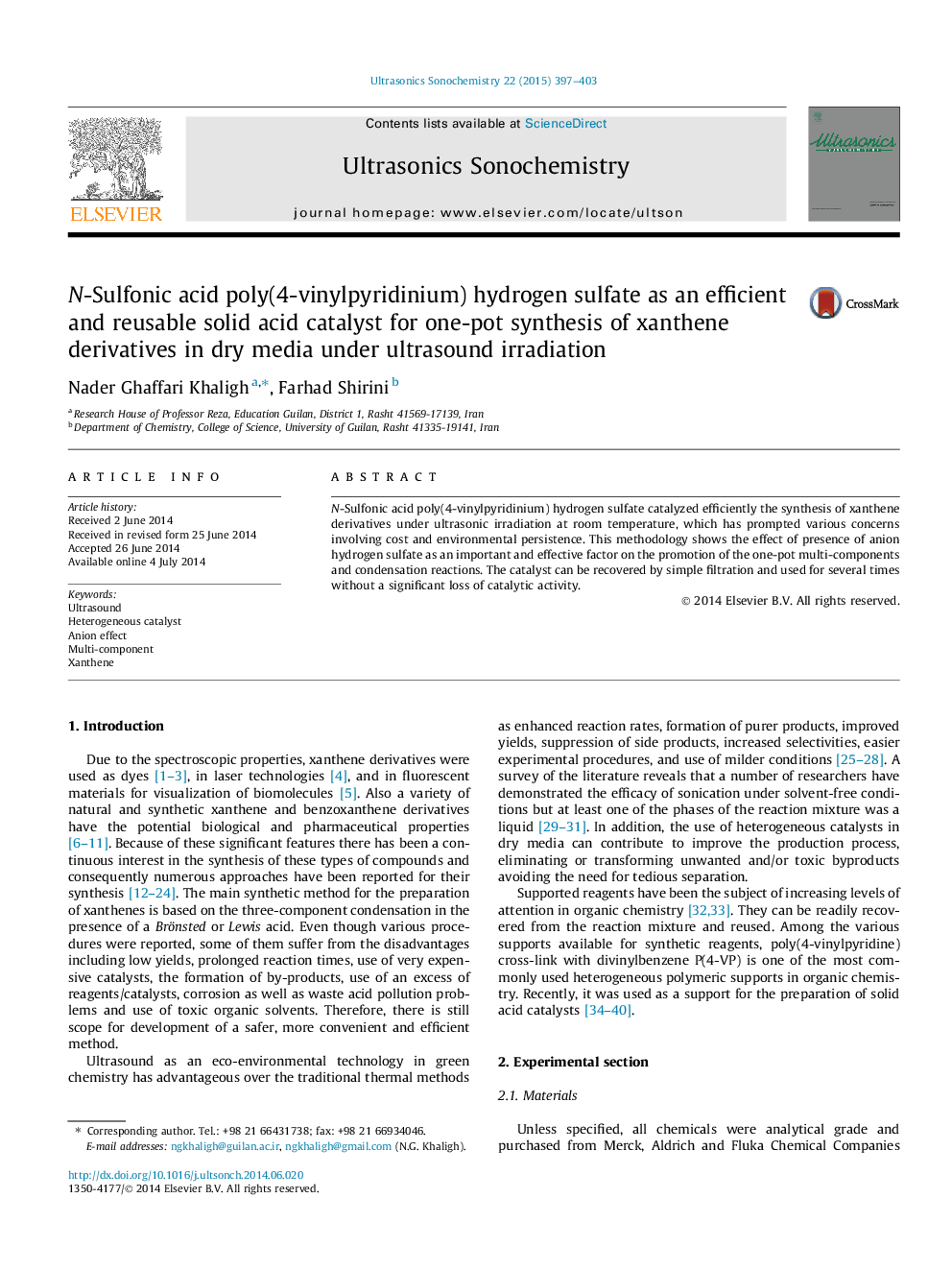| Article ID | Journal | Published Year | Pages | File Type |
|---|---|---|---|---|
| 1269662 | Ultrasonics Sonochemistry | 2015 | 7 Pages |
•Introducing new solid acid catalyst for organic transformations.•Showing the important supporting role of anion hydrogen sulfate on selectivity of the products of xanthene derivatives.•Application of ultrasonic method as a green source of energy.•Generality of the method, high yields and high reaction rates.•Recoverability and reusability solid acid catalyst.
N-Sulfonic acid poly(4-vinylpyridinium) hydrogen sulfate catalyzed efficiently the synthesis of xanthene derivatives under ultrasonic irradiation at room temperature, which has prompted various concerns involving cost and environmental persistence. This methodology shows the effect of presence of anion hydrogen sulfate as an important and effective factor on the promotion of the one-pot multi-components and condensation reactions. The catalyst can be recovered by simple filtration and used for several times without a significant loss of catalytic activity.
Graphical abstractFigure optionsDownload full-size imageDownload as PowerPoint slide
